Indiana University Libraries Book Repair Manual
Linen Thread
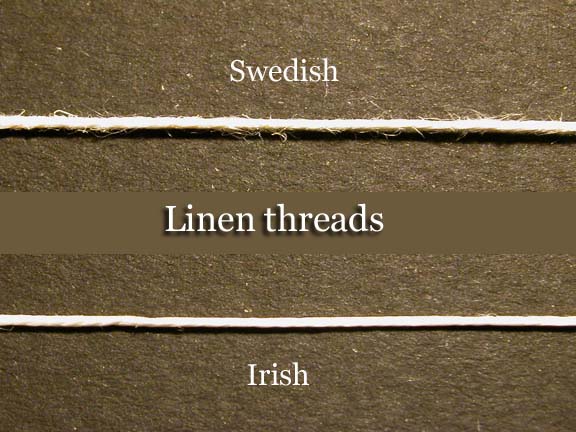
Linen thread is used for almost all the sewing we do. It is a three-ply thread, and we keep several thicknesses in stock. We use a fairly thick thread, 18/3, for pamphlet sewing and for sewing on most endsheets. We also have thinner threads on hand for more delicate sewing, such as 20/3, 25/3, 35/3, and 60/3. The "3" represents the ply and the first number is the thickness.
Waxed Thread
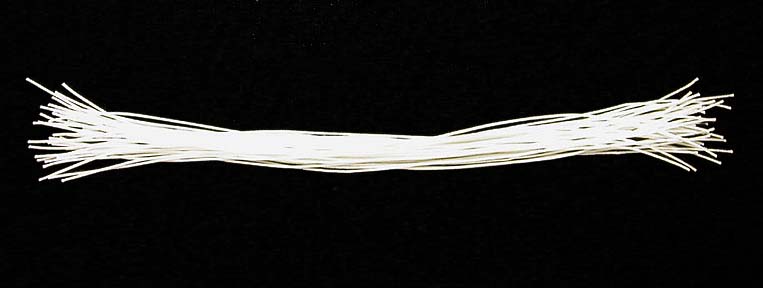
This is used in the closures of phase boxes. It is pre-cut to length, using a cutting template. To begin, the thread is simply wound around the template many times. Shown here is an earlier version of this simple and ingenious template, which was itself the full length of the phase box threads. This required that the thread be cut at both ends, and as one might imagine, the second of those cuts was sometimes troublesome. So we made a few improvements, as shown below.
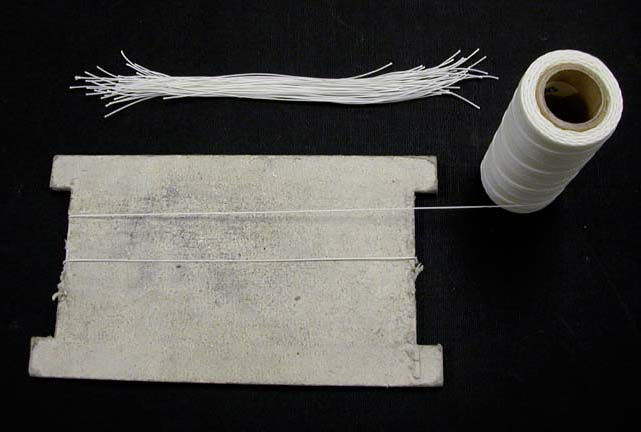
First of all, here's a shot of the old full-length template.
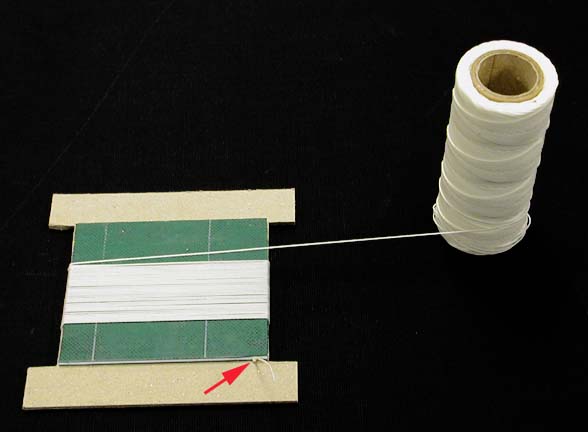
First, the template was reduced to exactly half the length of the phase box ties. Second, a small slit was cut in the template, into which the thread fits very snugly. A knot is tied in the end of the thread and it is worked into the slit and pulled until the knot is against the board (red arrow). This serves as a third hand in getting the winding started. And finally, the template was ensured a long life by the addition of a piece of self-healing cutting mat on one side.
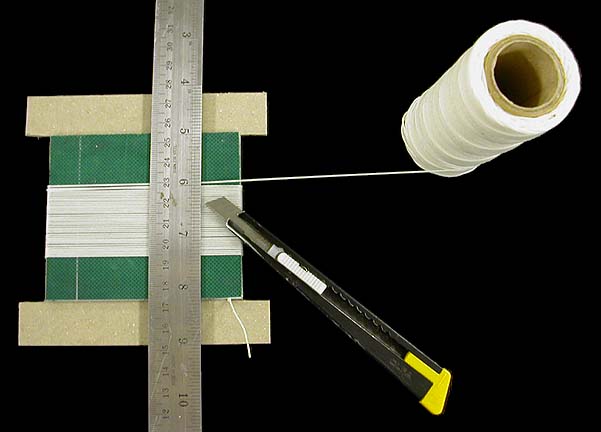
A straight edge is situated anywhere on the cutting mat (it doesn't have to be square across). The threads are cut with a razor knife.

As can be seen, only one cut needs to be made instead of two.
Cotton Twine
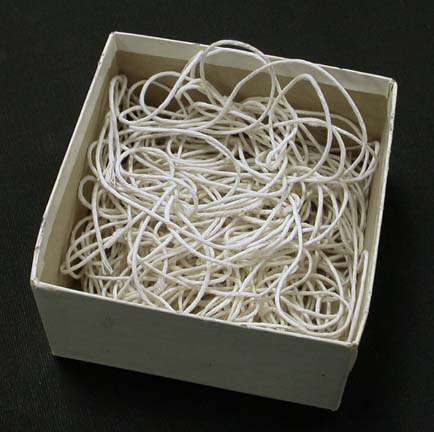
Cotton twine is used chiefly for making headbands and for reinforcing the cover material of cases at the top and bottom of the spine. The gauge or diameter used is the one most commonly called "16 ply" by manufacturers.